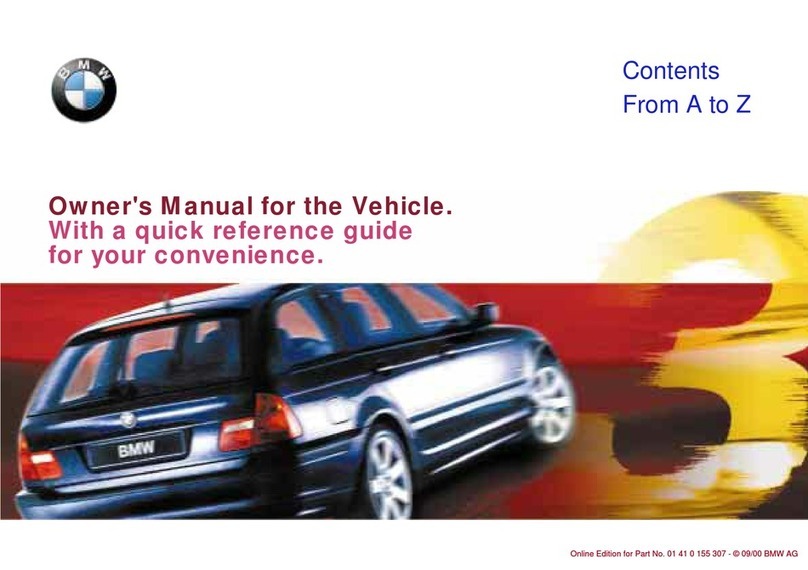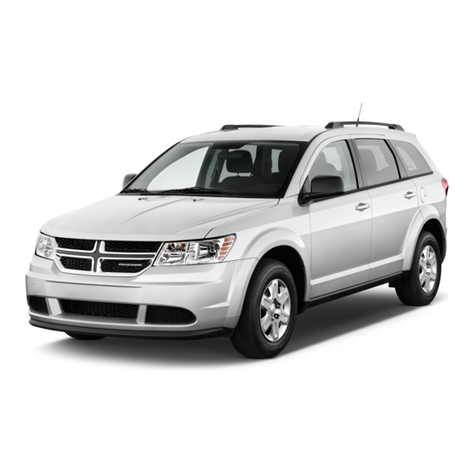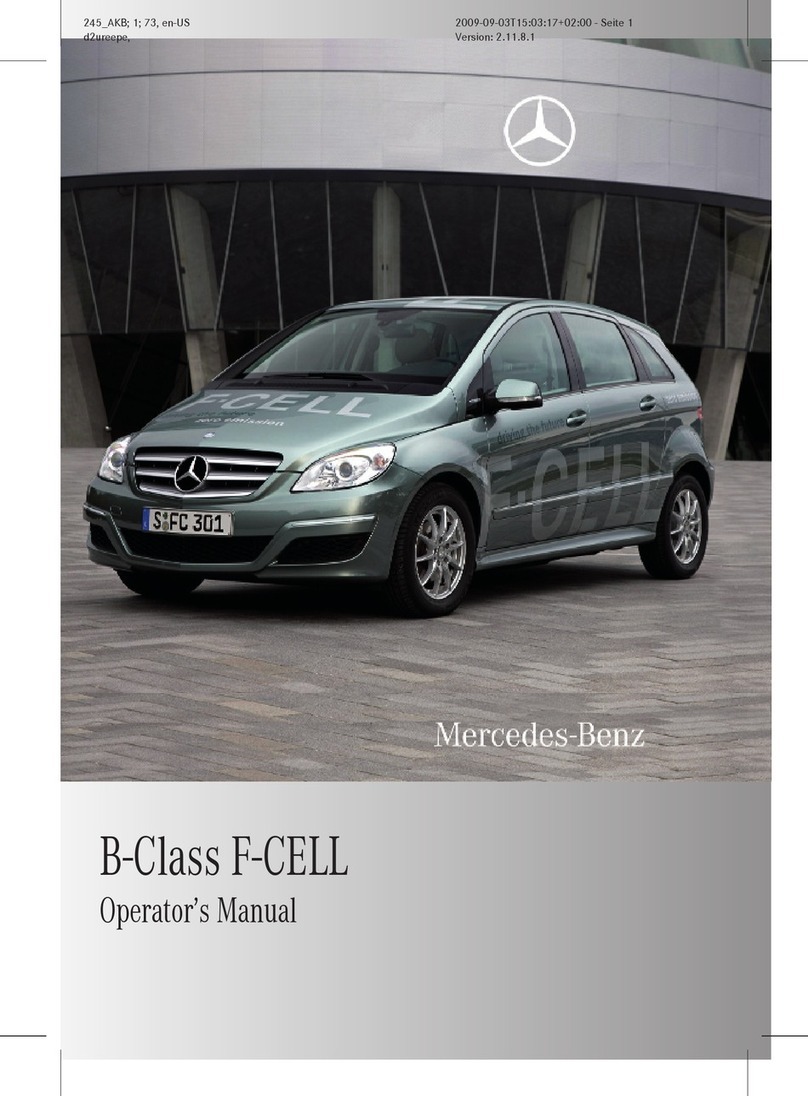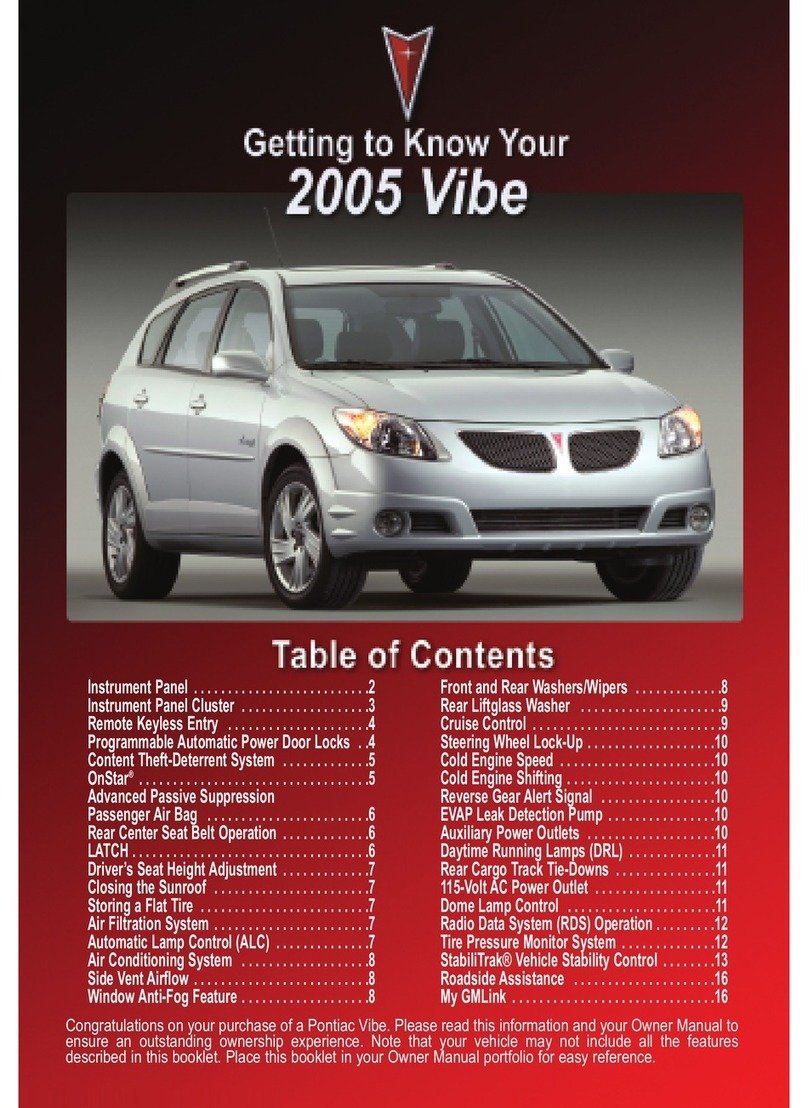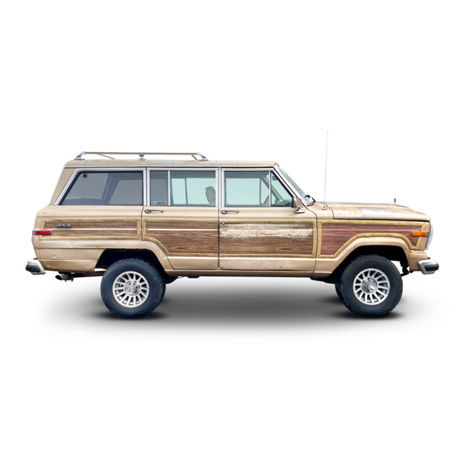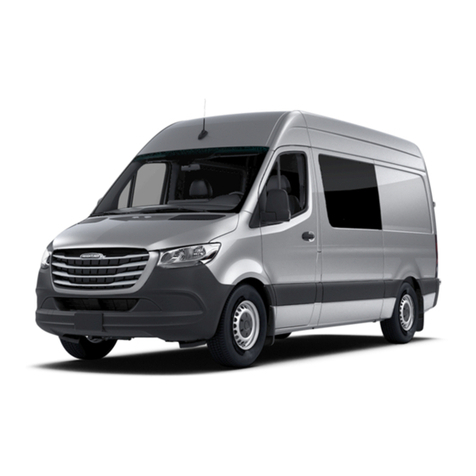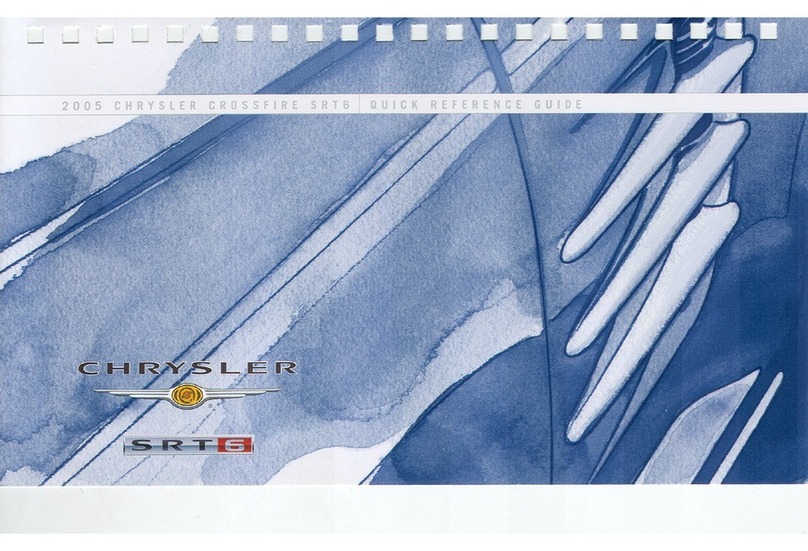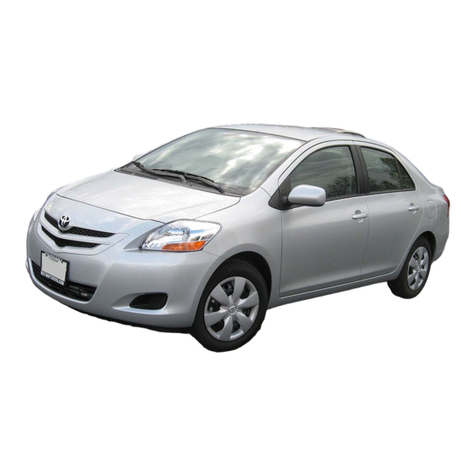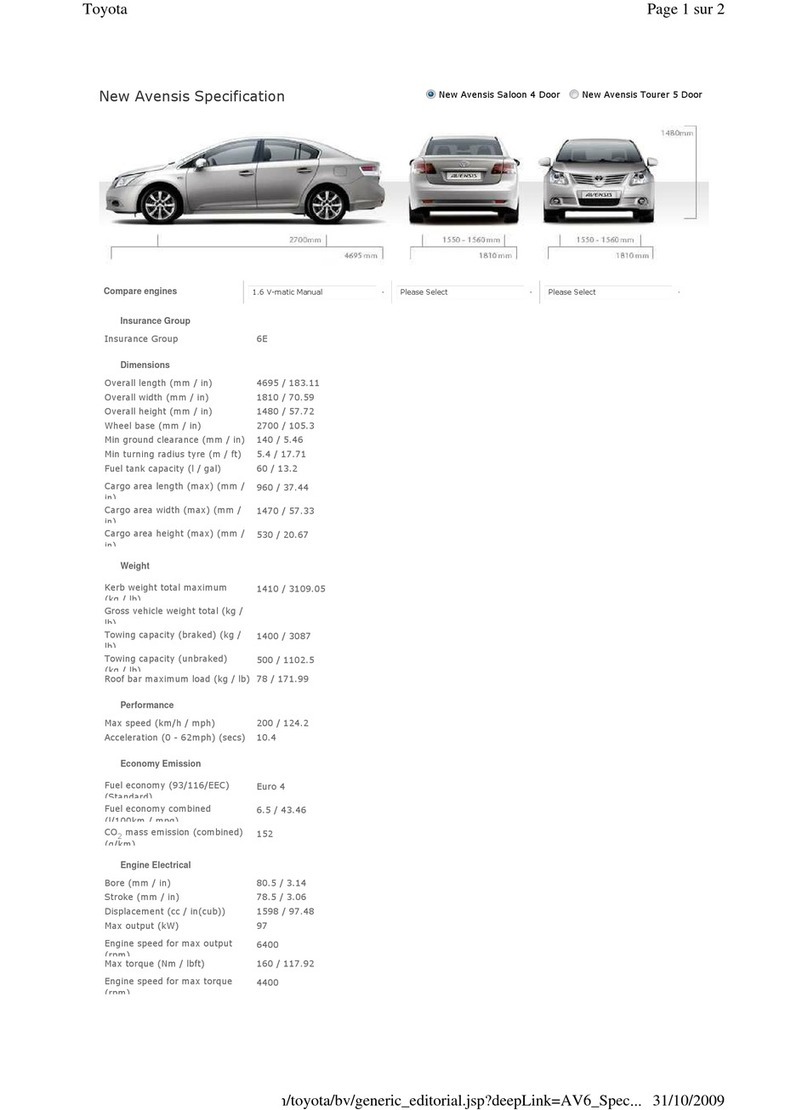BMW 1999-2005 M3 User manual


010-2
How to Use This Manual
WARNING!
Your common sense and good
judgment are crucial to safe and
successful service work. Read
procedures through efore starting
them. Think a out whether the
condition of your car, your level of
mechanical skill, or your level of
reading comprehension might result
in or contri ute in some way to an
occurrence that might cause you
injury, damage your car, or result in
an unsafe repair. If you have dou ts
for these or other reasons a out your
a ility to perform safe repair work on
your car, have the work done at an
authorized BMW dealer or other
qualified shop.
The manual is divided into ten sections:
0 GENERAL DATA AND
MAINTENANCE
1 ENGINE
2 TRANSMISSI N
3 SUSPENSI N, STEERING AND
BRAKES
4 B DY
5 B DY EQUIPMENT
6 ELECTRICAL SYSTEM
7 EQUIPMENT AND
ACCESS RIES
General
http://ebahn.bentleypublishers.com/BMW/3/E46/Repair%2 Manuals/ ...
1 of 5
2/25/2 9 1 : 7 PM

ELE ELECTRICAL WIRING
DIAGRAMS
BD N B ARD DIAGN STICS
0 GENERAL DATA AND
MAINTENANCE covers general vehicle
information (Repair Group 010) as well
as the recommended maintenance
schedules and service procedures to
perform BMW scheduled maintenance
work (Repair Group 020).
The next seven sections (Repair
Groups 1 through 7) are repair based
and organized by three digit repair
groups. Most major sections begin with
a General repair group, e.g. 100
Engine–General. These “00” (double
zero) groups are mostly descriptive in
nature, covering topics such as theory
of operation and troubleshooting. The
remainder of the repair groups contain
the service and repair information. The
last two major sections contains
detailed electrical wiring schematics
and scan tool codes.
A master listing of the individual repair
groups can be found on the inside
front cover. A comprehensive index can
be found at the back of the manual.
Warnings, cautions and notes
Throughout this manual are many
passages with the headings
WARNING, CAUTI N, or N TE. These
very important headings have different
meanings.
WARNING!
The text under this heading warns of
unsafe practices that are very likely
to cause injury, either y direct
threat to the person(s) performing
General
http://ebahn.bentleypublishers.com/BMW/3/E46/Repair%2 Manuals/ ...
2 of 5
2/25/2 9 1 : 7 PM

the work or y increased risk of
accident or mechanical failure while
driving.
CAUTION!
A caution calls attention to important
precautions to e o served during
the repair work that will help prevent
accidentally damaging the car or its
parts.
Note:
A note contains helpful information, tips
that will help in doing a better job and
completing it more easily.
Please read every WARNING,
CAUTI N, and N TE at the front of
the manual and as they appear in
repair procedures. They are very
important. Read them before you begin
any maintenance or repair job.
WARNING!
Never run the engine in the work
area unless it is well-ventilated.
The exhaust should e vented to
the outside. Car on monoxide
(CO) in the exhaust kills.
Remove all neckties, scarfs,
loose clothing, or jewelry when
working near running engines or
power tools. Tuck in shirts. Tie
long hair and secure it under a
cap. Severe injury can result
from these things eing caught
in rotating parts.
Remove rings, watches, and
racelets. Aside from the
dangers of moving parts,
metallic jewelry conducts
electricity and may cause
General
http://ebahn.bentleypublishers.com/BMW/3/E46/Repair%2 Manuals/ ...
3 of 5
2/25/2 9 1 : 7 PM

shorts, sparks, urns, or
damage to the electrical system
when accidentally contacting
the attery or other electrical
terminals.
Disconnect the attery negative
(–) ca le whenever working on
or near the fuel system or
anything that is electrically
powered. Accidental electrical
contact may damage the
electrical system or cause a fire.
Fuel is highly flamma le. When
working around fuel, do not
smoke or work near heaters or
other fire hazards. Keep an
approved fire extinguisher
handy.
The fuel system is designed to
retain pressure even when the
ignition is off. When working
with the fuel system, loosen the
fuel lines slowly to allow the
residual pressure to dissipate
gradually. Take precautions to
avoid spraying fuel.
Illuminate the work area
adequately and safely. Use a
porta le safety light for working
inside or under the car. A
fluorescent type light is est
ecause it gives off less heat. If
using a light with a normal
incandescent ul , use rough
service ul s to avoid reakage.
The hot filament of an
accidentally roken ul can
ignite spilled fuel or oil.
Keep sparks, lighted matches,
General
http://ebahn.bentleypublishers.com/BMW/3/E46/Repair%2 Manuals/ ...
4 of 5
2/25/2 9 1 : 7 PM

and any open flame away from
the top of the attery. Hydrogen
gas emitted y the attery is
highly flamma le. Any near y
source of ignition may cause the
attery to explode.
Never lay tools or parts in the
engine compartment or on top
of the attery. They may fall into
confined spaces and e difficult
to retrieve, ecome caught in
elts or other rotating parts
when the engine is started, or
cause electrical shorts and
damage to the electrical system.
Copyright © 2006 Robert Bentley, Inc. All rights reserved.
General
http://ebahn.bentleypublishers.com/BMW/3/E46/Repair%2 Manuals/ ...
5 of 5
2/25/2 9 1 : 7 PM

010-3
Getting Started
Most of the necessary maintenance
and minor repair that an automobile will
need can be done with ordinary tools.
Below is some important information on
how to work safely, a discussion of
what tools will be needed and how to
use them.
Safety
Although an automobile presents many
hazards, common sense and good
equipment can help ensure safety.
Many accidents happen because of
carelessness. Pay attention and stick
to safety rules in this manual.
Lifting the car
The proper acking points should be
used to raise the car safely and avoid
damage. The ack supplied with the car
can only be used at the four side
points (arrows)— ust behind the front
wheels or ust in front of the rear
wheels.
WARNING!
Never work under a lifted car
unless it is solidly supported on
jack stands that are intended for
that purpose.
When raising the car using a
floor jack or a hydraulic lift,
carefully position the jack pad to
prevent da aging the car body.
Plastic pads are provided for
this purpose by the
anufacturer at the jacking
General
http://ebahn.bentleypublishers.com/BMW/3/E46/Repair%2 Manuals/ ...
1 of 4
2/25/2 9 1 : 7 PM

points.
Watch the jack closely. Make
sure it stays stable and does not
shift or tilt. As the car is raised,
it ay roll slightly and the jack
ay shift.
Raising car safely
- Park car on flat, level surface.
- If changing a tire, loosen lug bolts
before rasing car. See
Changing a tire.
Place ack into position. Make sure ack
is resting on flat, solid ground. Use a
board or other support to provide a firm
surface for the ack, if necessary
- Raise car slowly while constantly
checking position of ack and car.
- Once car is raised, block wheel
that is opposite and farthest from
ack to prevent car from
unexpectedly rolling.
WARNING!
Do not rely on the trans ission
or the e ergency brake to keep
the car fro rolling. They are
not a substitute for positively
blocking the opposite wheel.
Never work under a car that is
supported only by a jack. Use
jack stands that are designed to
support the car. See Tools.
General
http://ebahn.bentleypublishers.com/BMW/3/E46/Repair%2 Manuals/ ...
2 of 4
2/25/2 9 1 : 7 PM

Working under car safely
- Disconnect negative (–) cable from
battery so that no one can start
car. Let others know what you will
be doing.
CAUTION!
Prior to disconnecting the battery,
read the battery disconnection
cautions given at the front of this
anual on page viii.
- Raise car slowly as described
above.
- Use at least two ack stands to
support car. Use ack stands
designed for the purpose of
supporting a car. For more
information on ack stands, see
Tools.
WARNING!
A jack is a te porary lifting
device and should not be used
alone to support the car while
you are under it.
Do not use wood, concrete
blocks, or bricks to support a
car. Wood ay split. Blocks or
bricks, while strong, are not
designed for that kind of load,
and ay break or collapse.
- Place ack stands on firm, solid
surface. If necessary, use a flat
board or similar solid ob ect to
provide a firm footing.
General
http://ebahn.bentleypublishers.com/BMW/3/E46/Repair%2 Manuals/ ...
3 of 4
2/25/2 9 1 : 7 PM

- Lower car slowly until its weight is
fully supported by ack stands.
Watch to make sure that the ack
stands do not tip or lean as the
car settles on them.
- Observe all acking precautions
again when raising car to remove
ack stands.
Copyright © 2006 Robert Bentley, Inc. All rights reserved.
General
http://ebahn.bentleypublishers.com/BMW/3/E46/Repair%2 Manuals/ ...
4 of 4
2/25/2 9 1 : 7 PM

010-4
Advice for the Beginner
The tips in the paragraphs that follow are
general advice to help any do-it-yourself
BMW owner perform repairs and
maintenance tasks more easily and more
professionally.
Planning ahead
To prevent getting in too deep, know what
the whole job re uires before starting. Read
the procedure thoroughly, from beginning to
end, in order to know just what to expect and
what parts will have to be replaced.
Cleanliness
Keeping things organized, neat, and clean is
essential to doing a good job. When working
under the hood, fender covers will protect
the finish from scratches and other damage.
Make sure the car finish is clean so that dirt
under the cover does not scratch the finish.
Any repair job will be less troublesome if the
parts are clean. For cleaning old parts, there
are many solvents and parts cleaners
commercially available.
For cleaning parts prior to assembly,
commercially available aerosol cans of parts
cleaner or brake cleaner are handy to use,
and the cleaner will evaporate completely.
WARNING!
Most solvents used for cleaning parts are
highly flammable as well as toxic
especially in aerosol form. Use with
extreme care. Do not smoke. Do not use
these products indoors or near any source
of heat sparks or flame.
Non-reusable fasteners
General
http://ebahn.bentleypublishers.com/BMW/3/E46/Repair%2 Manuals/ ...
1 of 5
2/25/2 9 1 : 8 PM

Many fasteners used on the cars covered by
this manual must be replaced with new ones
once they are removed. These include but
are not limited to: bolts, nuts (self-locking,
nylock, etc.), cotter pins, studs, brake
fittings, roll pins, clips and washers. Genuine
BMW parts should be the only replacement
parts used for this purpose.
Some bolts are designed to stretch during
assembly and are permanently altered
rendering them unreliable once removed.
These are known as tor ue-to-yield
fasteners. Always replace fasteners where
instructed to do so. Failure to replace these
fasteners could cause vehicle damage and
personal injury. See an authorized BMW
dealer for applications and ordering
information.
Tightening fasteners
When tightening the bolts or nuts that attach
a component, it is always good practice to
tighten the bolts gradually and evenly to
avoid misalignment or over stressing any one
portion of the component. For components
sealed with gaskets, this method helps to
ensure that the gasket will seal properly.
Where there are several fasteners, tighten
them in a se uence alternating between
opposite sides of the component. Repeat the
se uence until all the bolts are evenly
tightened to the proper specification.
For some repairs a specific tightening
se uence is necessary, or a particular order
of assembly is re uired. Such special
conditions are noted in the text, and the
necessary se uence is described or
illustrated. Where no specific tor ue is
listed, Table a can be used as a general
guide for tightening fasteners.
WARNING!
Table a
is a general reference only. The
General
http://ebahn.bentleypublishers.com/BMW/3/E46/Repair%2 Manuals/ ...
2 of 5
2/25/2 9 1 : 8 PM

values listed in the table are not intended
to be used as a substitute for torques
specifically called out in the text.
Note:
Metric bolt classes or grades are
marked on the bolt head.
Do not confuse wrench size with bolt
diameter. For a listing of the common
wrenches used on various bolt
diameters, see Basic tool
requirements.
Table a. General bolt tightening torques
in N ( ax. per issible)
Bolt
dia eter
Bolt Class (according to DIN
267)
5.6 5.8 6.8 8.8 10.9
12.9
M5 2.5 3.5 4.5 6 8 10
M6 4.5 6 7.5 10 14 17
M8 11 15 18 24 34 40
M10 23 30 36 47 66 79
M12 39 52 62 82 115 140
M14 62 82 98 130 180 220
M16 94 126 150 200 280 340
M18 130 174 210 280 390 470
Gaskets and seals
Gaskets are designed to crush and become
thinner as the mating parts are bolted
together. Once a gasket has been used, it is
no longer capable of making as good a seal
as when new, and is much more likely to
leak. For this reason, gaskets should not be
reused.
General
http://ebahn.bentleypublishers.com/BMW/3/E46/Repair%2 Manuals/ ...
3 of 5
2/25/2 9 1 : 8 PM

Some gaskets—such as head gaskets—are
directional. Make sure that these are
installed correctly. This same logic applies to
any part used for sealing, including rubber
O-rings and copper sealing washers.
In places where a shaft must pass through a
housing, flexible lip seals are used to keep
the lubricating oil or grease from leaking out
past the rotating shaft. Seals should never
be reused once they have been removed.
When removing a seal, be careful not to
damage the metal surfaces.
The key to seal installation is to get the seal
in straight without damaging it. Use a seal
driver that is the same diameter as the seal
housing to gently and evenly install into
place. If a proper size seal driver is not
available, a socket of the right size will do.
Some seals are directional and special
installation instructions apply. Make sure a
seal is installed with the lip facing the correct
way. Note the installation direction of the old
seal before removing it.
Electrical testing
Many electrical problems can be understood
and solved with only a little fundamental
knowledge of how electrical circuits function.
Electric current only flows in a complete
circuit. To operate, every electrical device in
the car re uires a complete circuit including
a voltage source and a path to ground. The
positive (+) side of the battery is the original
voltage source, and ground is any return
path to the negative (–) side of the battery,
whether through the wiring harness or the
car body. Except for portions of the charging
system, all electrical current in the car is
direct current (DC) and flows from positive
(+) to negative (–).
Switches are used to turn components on or
off by completing or interrupting the circuit. A
General
http://ebahn.bentleypublishers.com/BMW/3/E46/Repair%2 Manuals/ ...
4 of 5
2/25/2 9 1 : 8 PM

switch is “open” when the circuit is
interrupted, and “closed” when the circuit is
completed. See 600 Electrical System–
General for electrical troubleshooting.
Wire repairs
Repairs to a wiring harness re uire special
care to make the repair permanent. The wire
ends must be clean. If frayed or otherwise
damaged, cut off the end. If the wire is too
short, splice in a new piece of wire of the
same size and make two connections.
Use connectors that are designed for the
purpose. Crimped-on or soldered-on
connectors are best. Crimp connectors and
special crimping pliers are widely available. If
soldering, use needlenose pliers to hold the
wire near the solder joint and create a “heat
dam”. This keeps the heat and the solder
from traveling up the wire. Always use a
solder made specifically for electrical work
(rosin core).
Note:
Twisting wires together to make a repair is
not recommended. orrosion and vibration
will eventually spoil the connection and may
lead to irreparable damage to sensitive
electronic components.
Insulate the finished connection. Electronics
stores can supply heat-shrinkable insulating
tubing that can be placed onto the wire
before connecting, slid over the finished
joint, and shrunk to a tight fit with a heat gun
or hair dryer. The next best alternative is
electrical tape. Make sure the wire is clean
and free of solder flux or other
contamination. Wrap the joint tightly to seal
out moisture. See 600 Electrical System–
General for more information.
Copyright © 2006 Robert Bentley, Inc. All rights reserved.
General
http://ebahn.bentleypublishers.com/BMW/3/E46/Repair%2 Manuals/ ...
5 of 5
2/25/2 9 1 : 8 PM

010-5
Buying Parts
Many of the maintenance and repair
tasks in this manual call for the
installation of new parts, or the use of
new gaskets and other materials when
reinstalling parts. Most often, the parts
that will be needed should be on hand
before beginning the job. Read the
introductory text and the complete
procedure to determine which parts will
be needed.
Note:
For some bigger jobs, partial
disassembly and inspection are
required to determine a complete parts
list. Read the procedure carefully and, if
necessary, make other arrangements to
get the necessary parts while your car
is disassembled.
Genuine BMW parts
Genuine BMW replacement parts from
an authori ed BMW dealer are
designed and manufactured to the
same high standards as the original
parts. They will be the correct material,
manufactured to the same
specifications, and guaranteed to fit
and work as intended by the engineers
who designed the car. Some genuine
BMW parts have a limited warranty.
Many independent repair shops make
a point of using genuine BMW parts,
even though they may at times be
more expensive. They know the value
of doing the job right with the right
parts. Parts from other sources can be
as good, particularly if manufactured
by one of BMWs original equipment
suppliers, but it is often difficult to
know.
General
http://ebahn.bentleypublishers.com/BMW/3/E46/Repair%2 Manuals/ ...
1 of 3
2/25/2 9 1 : 8 PM

BMW is constantly updating and
improving their cars, often making
improvements during a given model
year. BMW may recommend a newer,
improved part as a replacement, and
your authori ed dealer’s parts
department will know about it and
provide it. The BMW parts organi ation
is best equipped to deal with any BMW
parts needs.
Non-returnable parts
Some parts cannot be returned, even
for credit. The best example is
electrical parts, which are almost
universally considered non-returnable.
Buy electrical parts carefully, and be as
sure as possible that a replacement is
needed, especially for expensive parts
such as electronic control units. It may
be wise to let an authori ed BMW
dealer or other qualified shop confirm
your diagnosis before replacing an
expensive non-returnable part.
Information you need to know
Model. When ordering parts it is
important that you know the correct
model designation for your car. Models
covered in this E46 manual are 323i/Ci,
325i/Ci, 325Xi, 328i/Ci, 330i/Ci 330Xi in
Sedan, Coupe, Convertible and Sport
Wagon body styles.
Model year. This is not necessarily the
same as date of manufacture or date of
sale. A 1999 model may have been
manufactured in late 1998, and
perhaps not sold until early 2000. It is
still a 1999 model. Model years covered
by this manual are 1999 to 2001.
Date of manufacture. This information
is necessary when ordering
replacement parts or determining if any
General
http://ebahn.bentleypublishers.com/BMW/3/E46/Repair%2 Manuals/ ...
2 of 3
2/25/2 9 1 : 8 PM

of the warranty recalls are applicable to
your car. The label on the driver’s door
below the door latch will specify the
month and year that the car was built.
Vehicle Identification Number (VIN).
This is a combination of letters and
numbers that identify the particular car.
The VIN appears on the state
registration document, and on the car
itself. One location is on the right front
strut tower in the engine compartment
(arrow), another in the lower left corner
of the windshield.
Engine code. 3 Series cars covered in
this manual are powered by 6-cylinder
engines. For information on engine
codes and engine applications, see
100 Engine–General.
Transmission code. The transmission
type with its identifying code may be
important when buying clutch parts,
seals, gaskets, and other transmission-
related parts. For information on
transmission codes and applications,
see 200 Transmission–General.
Copyright © 2006 Robert Bentley, Inc. All rights reserved.
General
http://ebahn.bentleypublishers.com/BMW/3/E46/Repair%2 Manuals/ ...
3 of 3
2/25/2 9 1 : 8 PM

010-7
Tools
Most maintenance can be
accomplished with a small selection of
the right tools. Tools range in quality
from inexpensive junk, which may
break at first use, to very expensive
and well-made tools for the
professional. The best tools for most
do-it-yourself MW owners lie
somewhere in between.
Many reputable tool manufacturers
offer good quality, moderately priced
tools with a lifetime guarantee. These
are your best buy. They cost a little
more, but they are good quality tools
that will do what is expected of them.
Sears’ Craftsman® line is one such
source of good quality tools.
Some of the repairs covered in this
manual require the use of special tools,
such as a custom puller or specialized
electrical test equipment. These special
tools are called out in the text and can
be purchased through an authorized
MW dealer. As an alternative, some
special tools mentioned may be
purchased from the following tool
manufacturers and/or distributors:
Assenmacher Specialty Tools
6440 Odell Place, oulder, CO
80301
303-530-2424
http://www.asttool.com
aum Tools Unlimited, Inc.
P.O. ox 5867, Sarasota, FL
34277-5867
800-848-6657
http://www.baumtools.com
Schley Products, Inc.
5350 E. Hunter Ave., Anaheim Hills,
CA 92807
714-693-7666
General
http://ebahn.bentleypublishers.com/BMW/3/E46/Repair%2 Manuals/ ...
1 of 7
2/25/2 9 1 : 9 PM

http://www.sptool.com
Zelenda Machine and Tool Corp.
65-60 Austin Street, Forest Hills, NY
11374-4695
718-896-2288
http://www.zelenda.com
Basic tool requirements
The basic hand tools described below
can be used to accomplish most of the
simple maintenance and repair tasks.
Screwdrivers. The common flat-blade
type and the Phillips type will handle
almost all screws used on MWs. Two
or three different sizes of each type will
be required, since a screwdriver of the
wrong size will damage the screw
head.
A complete set of screwdrivers should
also include Torx® type screwdrivers.
Wrenches. Wrenches come in different
styles, including open-end, 12-point
box-end, 6-point box-end and flare nut.
The basic open-end wrench is the most
widely used, but grips on only two
sides. The box-end wrench has better
grip on all six sides of a nut or bolt.
A 12-point box-end can loosen a nut or
bolt where there is less room for
movement, while a 6-point box-end
provides better grip. For hex fasteners
on fluid lines, like brake lines and fuel
lines, a flare-nut wrench offers the
advantages of a box-end wrench with a
slot that allows it to fit over the line.
The combination wrench is the most
universal. It has one open-end and one
box-end. 10 mm and 13 mm wrenches
are the most common sizes needed. A
more complete set of wrenches would
include 6 mm through 19 mm sizes.
General
http://ebahn.bentleypublishers.com/BMW/3/E46/Repair%2 Manuals/ ...
2 of 7
2/25/2 9 1 : 9 PM
This manual suits for next models
7
Table of contents
Other BMW Automobile manuals
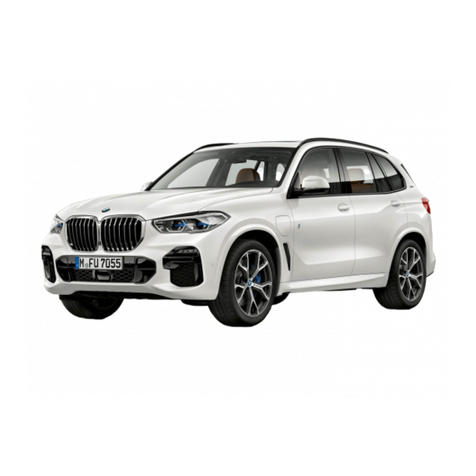
BMW
BMW X5 PLUG-IN HYBRID User manual
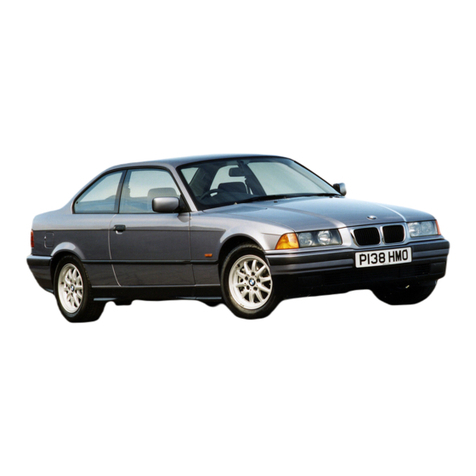
BMW
BMW 1999 E36 Coupe 318is Programming manual
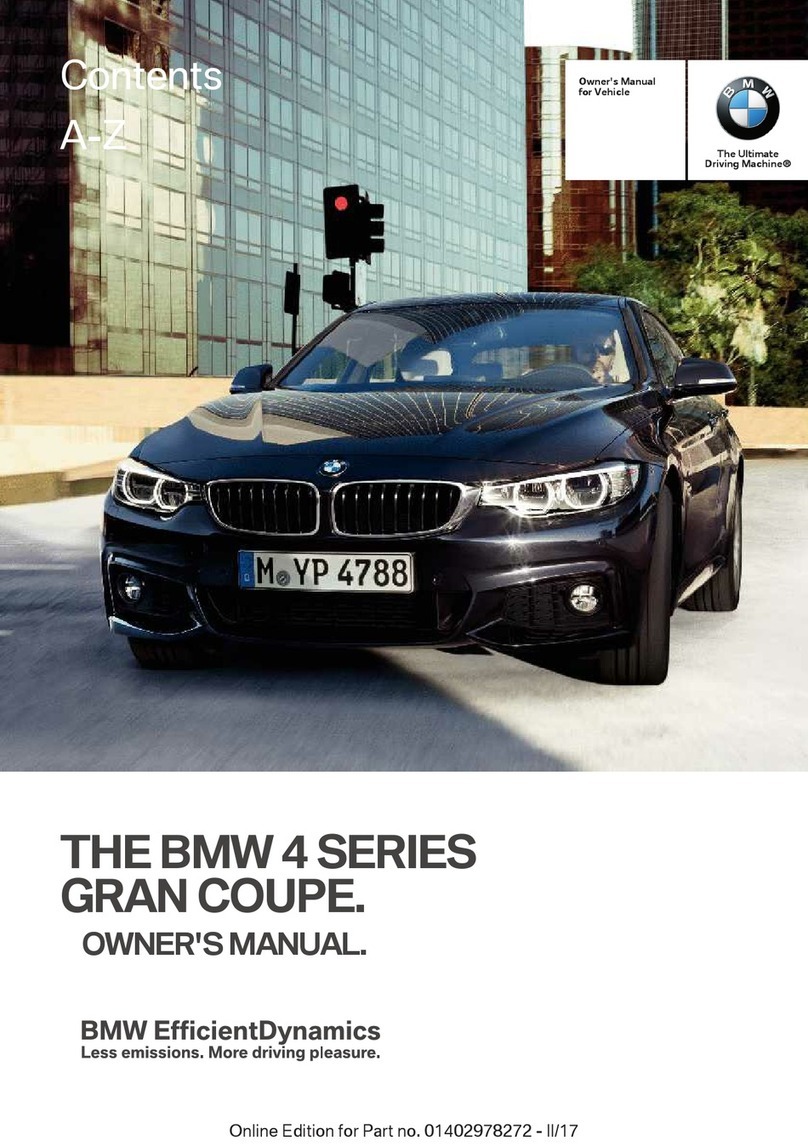
BMW
BMW GRAN COUPE 4 Series User manual

BMW
BMW M3 User manual
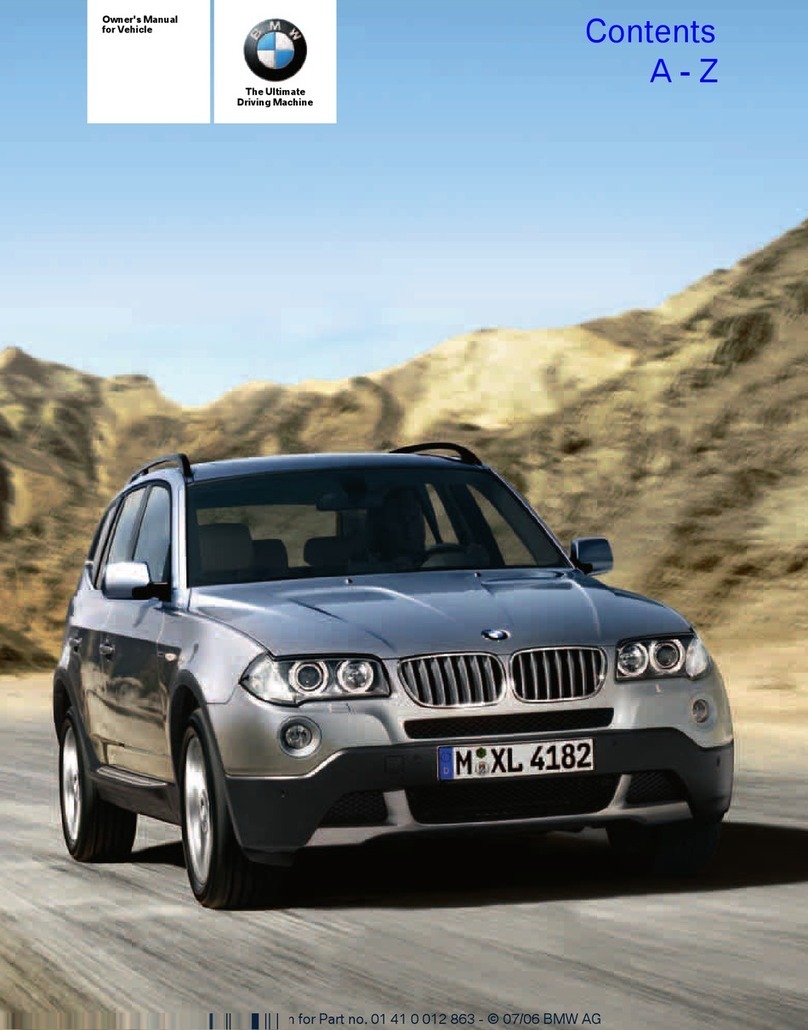
BMW
BMW X33.0i User manual

BMW
BMW X1 - PRODUCT CATALOGUE User manual

BMW
BMW 128I User manual

BMW
BMW 650i Coupe User manual

BMW
BMW 5 Series Grand Turismo 2013 User manual

BMW
BMW Mini series User manual

BMW
BMW 2016 M4 Coupe User manual
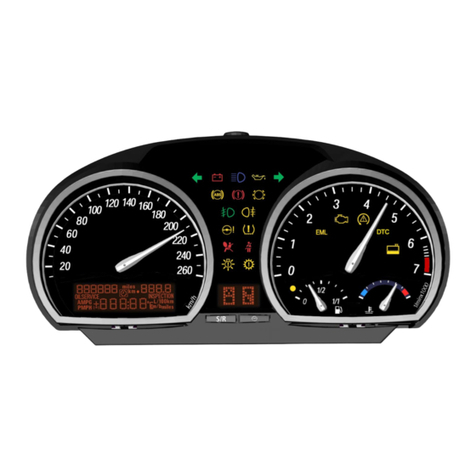
BMW
BMW E85 Manual
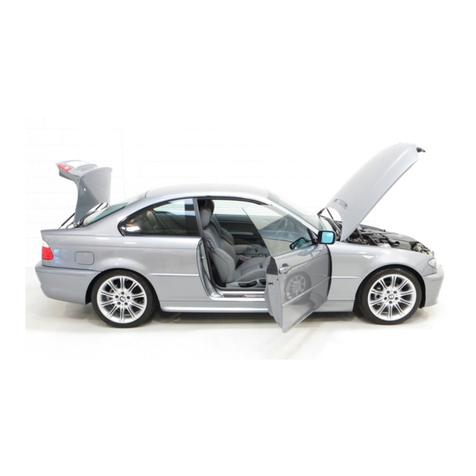
BMW
BMW SERIE 3 COUPE 2003 User manual

BMW
BMW 2010 528 User manual

BMW
BMW Mini series User guide
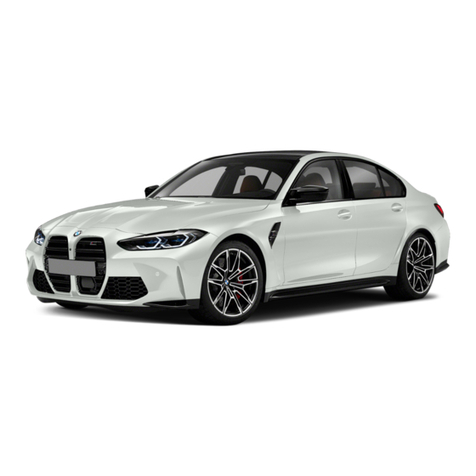
BMW
BMW M3 SEDAN User manual
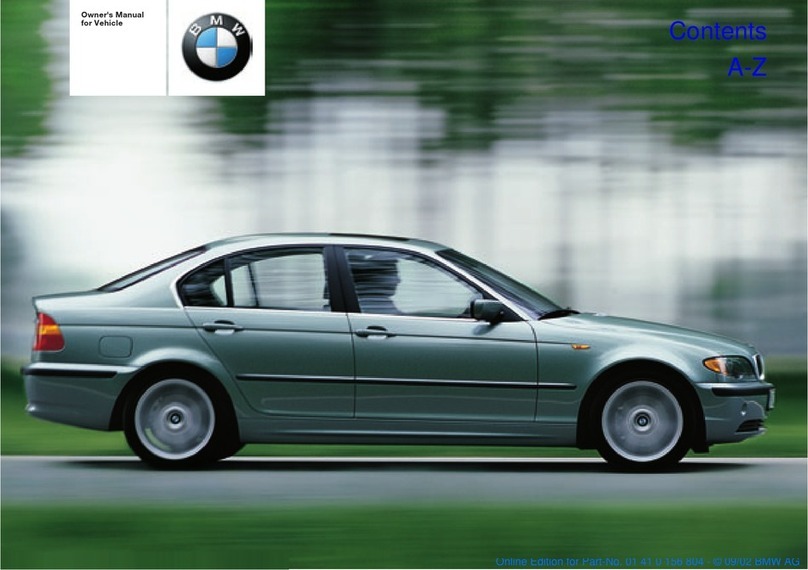
BMW
BMW 325xi User manual
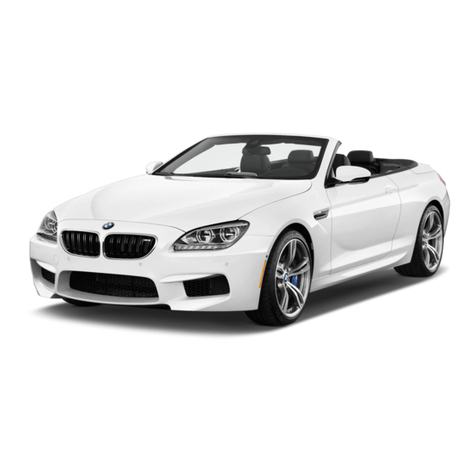
BMW
BMW M6 Convertible User manual

BMW
BMW X1 - PRODUCT CATALOGUE User manual

BMW
BMW 5 series sedan User manual

